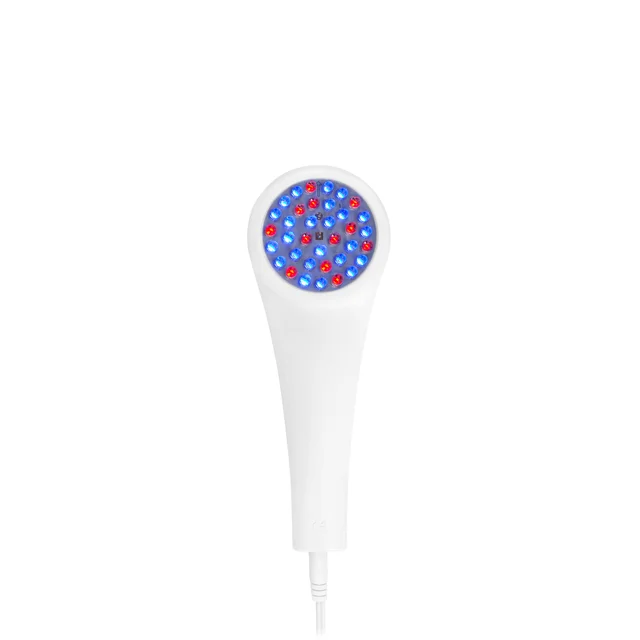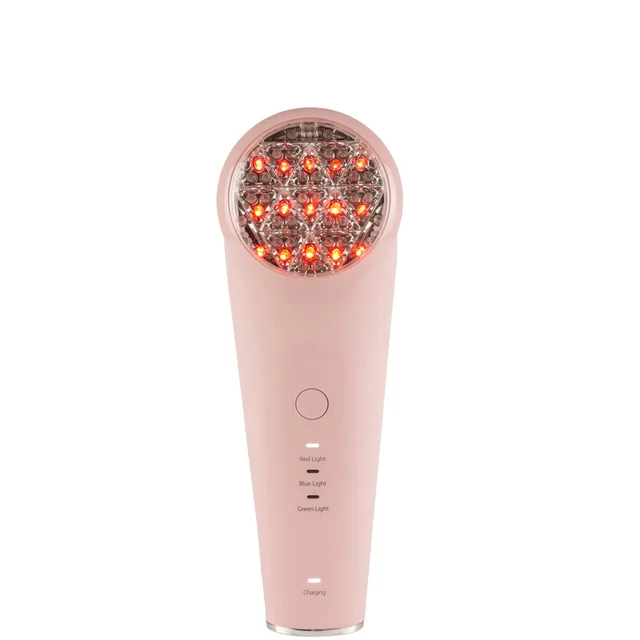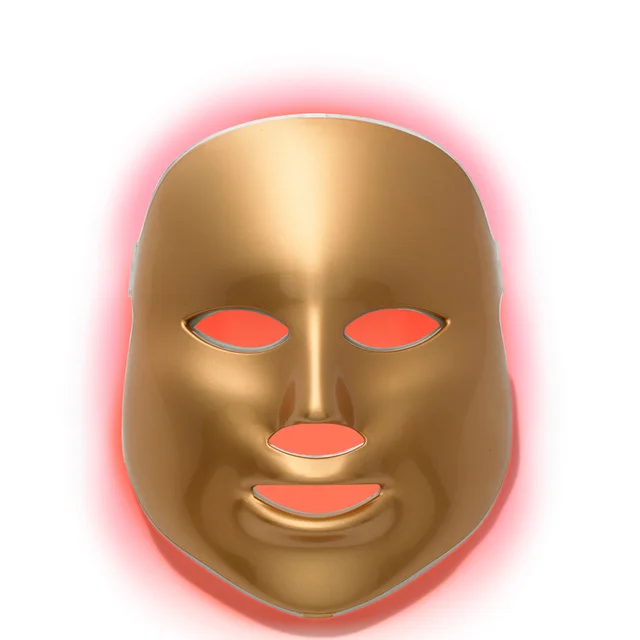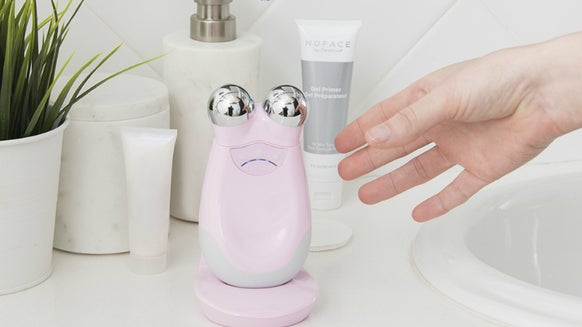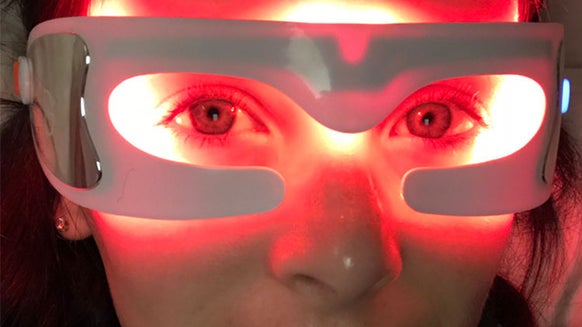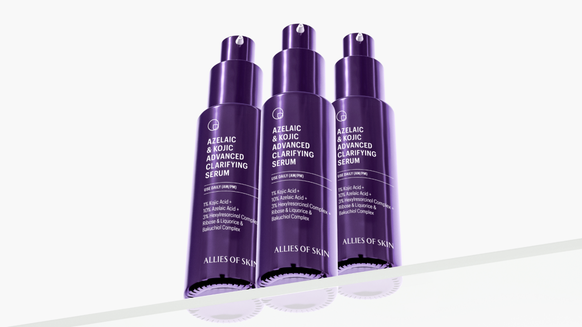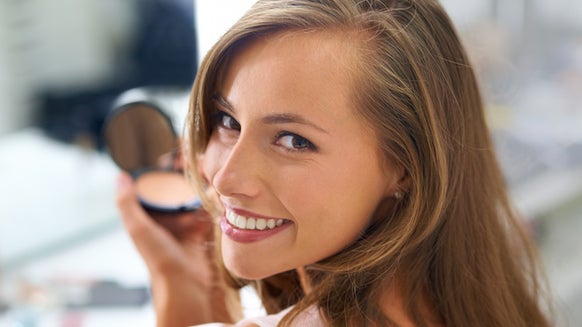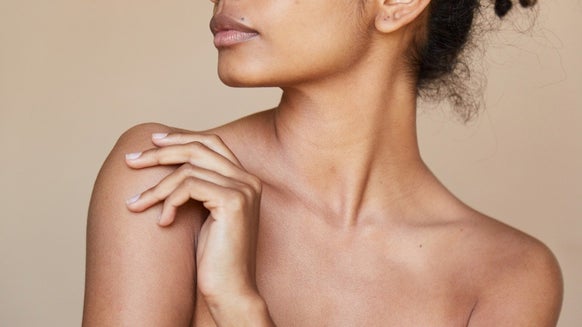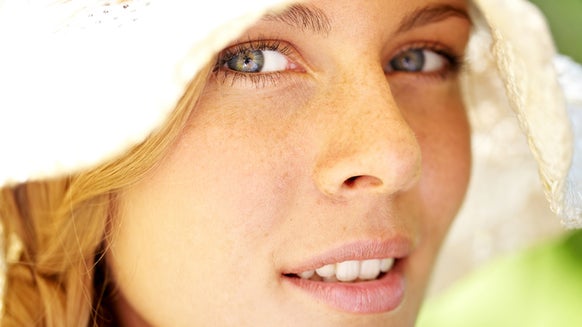What is LED Light Therapy? Everything You Need to Know About This Skin-Transforming Treatment
Whether it’s to recover from a particularly bad acne episode or a much-needed pampering sesh after a stressful week, there are times when your skin craves more than the usual TLC. Enter LED light therapy, a non-invasive, cutting-edge treatment that promises clearer, brighter, and healthier skin.
Originally developed for medical use (by NASA scientists, no less), LED light therapy may just be the missing piece in your skincare routine, especially with the introduction of professional-grade LED light therapy at-home devices. But what exactly is LED light therapy and how does it work? Below, we break down everything you need to know and see why you should consider adding it to your routine.
What is LED Light Therapy?
First developed by NASA scientists to help with plant growth, wound healing, and repairing tissue in space, light-emitting diode (LED) light therapy has since made a stylish landing in the world of skincare. Today, it’s one of the go-to treatments recommended by dermatologists and aestheticians to achieve blemish-free, youthful, and naturally glowing skin.
LED light therapy—whether done as an in-office treatment or with a sleek at-home device—uses different frequencies of light to target some of the most common and stubborn skin concerns. It involves exposing the skin to light-emitting diode lights with specific wavelengths that penetrate varying layers of the skin, directly targeting the cell’s light receptors that convert the light into energy. This process stimulates cells and fuels them with energy they need to improve their functions, which includes collagen production, destroying acne-causing bacteria, wound healing, and preventing hyperpigmentation.
What Does LED Light Therapy Do?
Before it debuted as a skincare treatment, LED light therapy was originally used by astronauts and the U.S. Navy Seals to speed up wound healing and repair muscle tissues. Since applying the same technology to address different skincare needs, LED light therapy has been mainly lauded for its ability to stimulate intracellular reactions and collagen production. This results in a smoother complexion as well as diminished appearance of age spots and hyperpigmentation, acne, and signs of aging over time.
LED light therapy works by harnessing different frequencies or wavelengths of light that penetrate the skin at varying depths. Depending on the type of light used, LED light therapy can trigger a specific cellular response, making it a highly effective targeted treatment for inflammatory skin conditions like eczema, rosacea, and acne, sun damage, wrinkles, uneven skin tone, and even hair loss.
Benefits of LED Light Therapy for the Skin
Incorporating LED light therapy in your skincare routine can deliver a wide range of benefits for your skin, including:
- Treating and preventing acne
- Stimulating collagen production
- Smoothing out uneven texture
- Reducing inflammation
- Speeding up the healing process
Is LED Light Therapy Safe for All Skin Types?
LED light therapy is generally deemed safe for all skin types because it is non-invasive, painless, and doesn’t involve the use of ultraviolet rays. This means you can reap its benefits without risking burns or any long-term damage when used correctly. That said, it’s still important to exercise caution and speak with a dermatologist or professional before introducing your skin to LED light therapy, especially if you have a history of photosensitivity or using active ingredients or treatments that increase your skin’s sensitivity to light. It’s also a great option for those with deeper skin tones as unlike other treatments, LED light therapy doesn’t cause hyperpigmentation.
LED Light Therapy Color Guide
Just like how certain active ingredients work best for specific skin concerns, LED light therapy also uses different wavelengths of light (each corresponding to a visible color) to target skin issues. The most common light frequencies used for in-office and at-home light therapy include:
1. Red Light Therapy for Skin
Reaching between two to three millimeters deep into the skin’s layers, red light therapy is primarily used for stimulating the skin’s collagen and elastin production, which help in enhancing and maintaining the skin’s firmness, elasticity, and youthfulness. It also improves blood circulation, which helps nourish skin cells and promote overall skin rejuvenation, and helps the skin deal with inflammation. Opt for red light therapy if you’re targeting signs of aging like fine lines, wrinkles, loss of firmness and flexibility, and sagging skin.
Featured Product: Deese Pro LED Phototherapy Mask
If you’re looking for a light therapy device that does it all, then the Deese Pro LED Phototherapy Mask is for you. Featuring red, green, blue, and near-infrared lights, it’s the easiest and quickest way to address common concerns and reinforce the skin’s rejuvenating and healing process.
Skin Type: All skin types
Skin Benefits: Targets fine lines and wrinkles, rids skin of acne-causing bacteria, reduces pigmentation and scarring, calms inflammation, speeds up healing
Beauty Insider Tip: This device features six different settings–anti-aging, purifying, brightening, post procedure, calming, and anti-aging express–to address every skin condition and concern. For best results, wear the mask for 20 minutes once daily and apply a hyaluronic acid serum before starting treatment.
2. Blue Light Therapy for Skin
Ideal for breakout-prone skin, blue light is a powerful tool in fighting the good fight against acne, especially if you have highly sensitive skin that struggles to cope with potent acne treatments. With its shorter wavelength, it penetrates the skin’s outer layers to kill off acne-causing bacteria without damaging surrounding tissue. Not to mention, it even helps in keeping oil production under control and preventing future breakouts by reducing the activity of the sebaceous glands.
Featured Product: LightStim for Acne (1Kit)
With its advanced LightStim MultiWave® technology, this acne-fighting device is designed to emit multiple wavelengths of light simultaneously to give your skin a brighter, more youthful, and clearer appearance. It combines powerful blue light to eliminate pesky acne-causing bacteria with red light to soothe calm redness and inflammation.
Skin Type: All skin types
Skin Benefits: Kills acne-causing bacteria, calms redness and inflammation, reduces fine lines and wrinkles
Beauty Insider Tip: To use, gently place your LightStim for Acne device in the target area and hold for three minutes (until the device beeps). Move to another part of your skin and repeat until you’ve treated all desired areas. Make sure to use the device no more than three minutes per area, once daily.
3. Green Light Therapy for Skin
If discoloration, dark spots, and hyperpigmentation are your main concerns, then green light therapy can offer you a solution. Green light helps break down excess melanin in the skin, refining color irregularities like age spots, sunspots, and post-acne blemishes. It also imparts a calming effect on the skin to reduce redness and irritation while promoting an even, glowing complexion.
Featured Product: Skin Gym Revilit LED
By simply choosing your desired treatment mode–blue light for treating acne, red light for redness and anti-aging concerns, and green light for pigmentation issues–this device allows you to treat a host of skin concerns and rejuvenate your complexion in just three minutes.
Skin Type: All skin types
Skin Benefits: Helps with uneven skin tone and pigmentation, calms redness, refines signs of aging, treats and prevents acne
Beauty Insider Tip: To achieve your desired results, use this device two to four times a week. Simply place the device over the targeted area for three minutes before moving to a new area.
4. Yellow Light Therapy for Skin
Yellow or amber light, with wavelengths that range from 560 to 590 nanometers, focuses on the middle layer of the skin. It supports blood circulation and building of new collagen and elastin, resulting in improved hydration and moisture retention, a younger-looking complexion, and accelerated wound healing. It also delivers a soothing effect, which helps in calming redness, swelling, and inflammation, making it ideal for treating rosacea and other skin irritations.
Featured Product: MZ Skin Golden Light Therapy Treatment Mask
Taking advantage of innovative science and professional-level technology, this treatment mask boasts of five-colored LED lights to promote complete skin transformation. With different settings featuring red, blue, green, white, and yellow lights, it’s an all-in-one light therapy device that ticks all the boxes–from stimulating collagen and reducing pigmentation and signs of aging to repairing damage and eliminating breakouts.
Skin Type: All skin types
Skin Benefits: Heals sun damage and improves scarring, clears blemishes and treats acne, fades discoloration and hyperpigmentation, soothes redness and sensitivity, promotes wound healing and skin repair
Beauty Insider Tip: Use the mask two to three times a week, starting with 10-minute sessions and slowly building up to 30 minutes. With regular use, you’ll soon notice visible results after four weeks.
5. Near-Infrared Light (NIR) Therapy for Skin
Near-infrared light falls just outside the visible spectrum of light, with a wavelength of 700nm to 2500 nm that allows it to go deeper into the skin’s subdermal layers. Often used with red light, NIR light penetrates deeper into the skin and triggers healing and renewal activity in skin cells. It stimulates the production of new collagen, addresses stubborn pigmentation concerns, and helps repair damage from environmental stressors, resulting in a clearer, smoother, and more radiant façade.
Featured Product: HigherDOSE Red Light Neck Enhancer
At some point, we’ve all been guilty of neglecting our neck and decolletage. A shame, really, considering these parts often reveal the first signs of skin aging. So if you want to make up for those times you overlooked these delicate areas, then reach for this anti-aging LED light therapy device. Specifically designed to reduce fine lines and wrinkles, redness, and loss of firmness in your neck and decollette, it uses powerful red and near-infrared lights to regenerate skin cells, enhance collagen production, and promote natural radiance.
Skin Type: All skin types
Skin Benefits: Reduces neck lines and wrinkles, supports collagen and elastin production, promotes glow, reduces redness
Beauty Insider Tip: For enhanced radiance, apply two to three pumps of HigherDOSE Glow Serum before treatment to allow red light and heat to activate its full benefits. Then, set the timer on your neck enhancer for 10 to 20 minutes. Do this three to five times a week for optimal results.
FAQs
How Often Should You Do LED Light Therapy?
New LED light therapy device users can kick off their LED light therapy with two to three sessions per week, with each treatment lasting between 10 to 20 minutes (depending on the device you’re using and the area/concern you’re targeting). Once you see noticeable improvements, you can then switch to a maintenance routine once a week to make sure your skin stays in top condition.
Does Red Light Therapy Really Work?
Absolutely! Red light therapy—and LED light therapy, in general—is backed by robust studies that demonstrate its ability to stimulate collagen production, reduce wrinkles, and improve complexion and overall texture with proper and consistent use. Although LED light therapy devices aren’t like magic wands that can transform your skin with one swish, regular treatment can deliver visible, long-term results over time.
The Bottom Line
LED light therapy is a safe, non-invasive, and science-backed treatment that can significantly improve your skin health. With its wide range of benefits—from treating and preventing acne to refining wrinkles and hyperpigmentation—it could very well be the skincare breakthrough you’ve been waiting for. And with the introduction of at-home LED light therapy devices, it’s now easier to achieve professional-level results right in the comfort of home, whether you’re battling breakouts, chasing that youthful glow, or aiming for a smoother, more even complexion.

Janeca Racho is a Journalism graduate with over 15 years of writing experience. After getting her start in public relations and advertising, she made the switch to freelance writing and began working for various lifestyle, fashion, and travel brands. Her love for all things skincare has led her to beauty reporting and research for the last ten years. Writing for several hair and beauty blogs, she reports on anti-aging staples, trending brands and products, must-have ingredients, and health and wellness.

